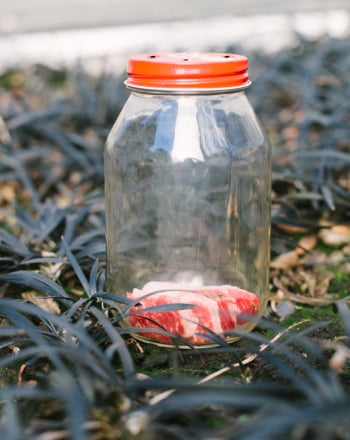Science project
Force and the Fulcrum
Grade Level: 5th - 8th; Type: Physics
Objective:
To find out how much force is needed to move a lever at different distances from the fulcrum.
The purpose of this experiment is to learn whether the amount of force needed to lift an object on one end of a lever changes as you apply that force closer to or further away from the fulcrum at the center of the lever.
Research Questions:
- How does a lever work?
- How can a person easily lift an object much heavier than they are?
- How much force can an average person apply to a lever?
A lever is a simple tool that helps a person lift a heavy object off the ground. With gravity to help us, we can push down with a much greater amount of force than we can lift up. Pushing on the end of a lever allows the lever to work with the least amount of downward force. Examining the relationship between the distance towards the fulcrum and the amount of force needed to lift an object of the same weight is important in order to understand why a lever is used the way it is. This principle applies to other common objects as well, including doors. Pushing on a door on the handle side makes the door open quickly and easily, while pushing on it towards the hinges makes opening the door difficult or impossible. Physicists study the application of force to help them design new tools and to learn how to best use these tools.
Materials:
- A fulcrum (2 wooden wedges placed back to back)
- A wooden board
- Weights
- A meter stick
Experimental Procedure:
-
Balance a board on a fulcrum so that it does not tip to one side.
-
Mark that point on the board with a pencil so that if it slips you can easily find the balance point again.
-
Place a weight at one of the ends of the board. Keep it here for the entire experiment.
-
Find out how much weight you need to place at the opposite far end of the board in order to balance it again.
-
Record the results on a chart such as the one below.
-
Find the distance that is ¼ of the way closer to the fulcrum on the balancing side.
-
Find out how much weight you need to place at the ¼ mark in order to balance the board again.
-
Record the results on a chart such as the one below.
-
Find the distance that is ½ way between the end and the fulcrum.
-
Find out how much weight you need to place at the ½ mark in order to balance the board again.
-
Record the results on a chart such as the one below.
-
Find the distance that is ¾ of the way towards the fulcrum.
-
Find out how much weight you need to place at the ¾ mark in order to balance the board again.
-
Record the results on a chart such as the one below.
-
Double the amount of weight at one end of the lever.
-
Make predictions about the amount of force you will need at each of the points along the board.
-
Repeat steps 4-14.
-
Double the amount of weight at the end of the lever again.
-
Make predictions about the amount of force you will need at each of the points along the board.
-
Repeat steps 4-14.
Use any amount of weight that is convenient for your experiment. 100g, 200g and 400g are given as an example.
|
|
full length
|
¼ towards fulcrum
|
½ towards fulcrum
|
¾ towards fulcrum
|
|
100g
|
|
|
|
|
|
200g prediction
|
|
|
|
|
|
200g actual
|
|
|
|
|
|
400g prediction
|
|
|
|
|
|
400g actual
|
|
|
|
|
Terms/Concepts: lever; fulcrum; force; weight; simple tools
References:
Education.com provides the Science Fair Project Ideas for informational purposes only. Education.com does not make any guarantee or representation regarding the Science Fair Project Ideas and is not responsible or liable for any loss or damage, directly or indirectly, caused by your use of such information. By accessing the Science Fair Project Ideas, you waive and renounce any claims against Education.com that arise thereof. In addition, your access to Education.com's website and Science Fair Project Ideas is covered by Education.com's Privacy Policy and site Terms of Use, which include limitations on Education.com's liability.
Warning is hereby given that not all Project Ideas are appropriate for all individuals or in all circumstances. Implementation of any Science Project Idea should be undertaken only in appropriate settings and with appropriate parental or other supervision. Reading and following the safety precautions of all materials used in a project is the sole responsibility of each individual. For further information, consult your state's handbook of Science Safety.













